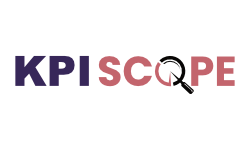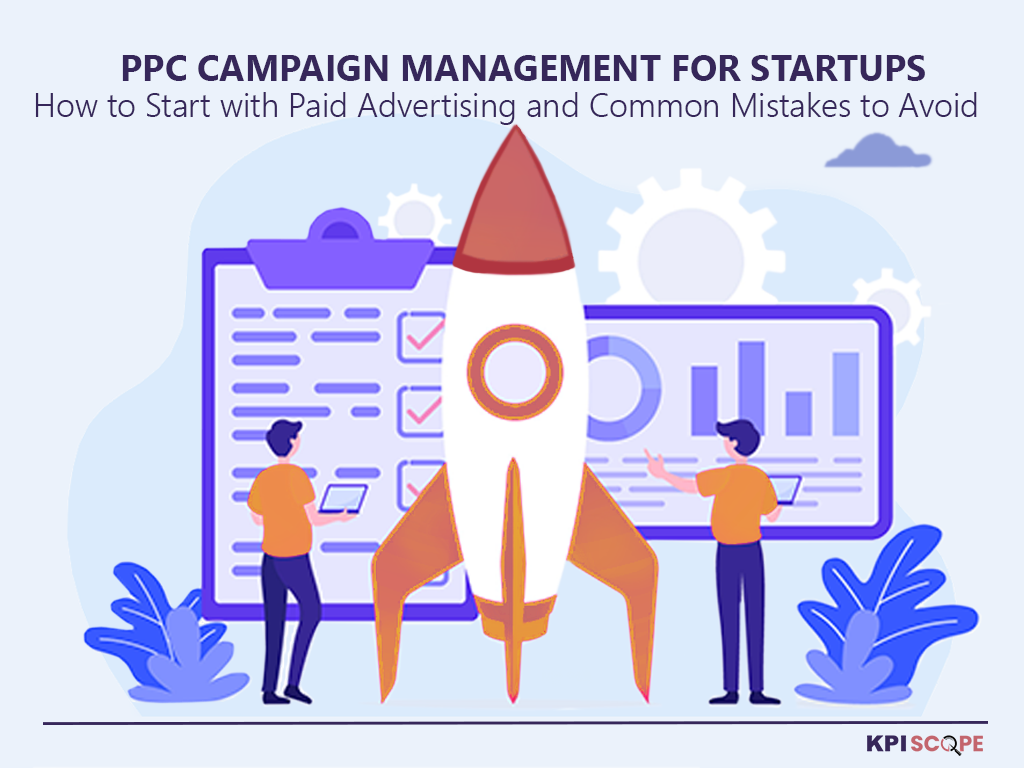Effective PPC campaign management is essential for startups to maximize their return on ad spend and reach their business growth goals. It provides a direct and cost-effective way to acquire customers and gain market share.
But, what is PPC? Pay-per-click, or PPC, is a form of online advertising where you pay a fee each time a user clicks on your ad. For startups, the objective is for the value of the customer’s visit to your site to far exceed the cost of the click.
PPC provides a fast track to growing website traffic, unlike organic efforts like SEO, which require extensive time and research. A startup can use a focused PPC campaign as a tool to validate keywords and ad copy.
You can use the proven insights from these paid efforts to build a more effective, long-term content and SEO strategy. This direct relationship positions PPC as an essential first step for any lean business.
PPC ads are diverse in format. They include text-based ads on search engine results pages from Google and Bing. They also appear as images or text on social platforms like Facebook and LinkedIn.
The core advantage of this model is the wide reach and the significant control over budget, targeting, and bidding. This channel also provides immediate and concrete reporting on your budget allocation, offering valuable insights into locations, devices, and user demographics that perform best. This detailed data allows for rapid evaluation and optimization of content and advertising efforts.
A High-Level Look at How the Ad Auction Works
PPC operates on an auction-based system. This automated process occurs every time a person makes a Google search. It determines which advertisements are eligible to appear and in what order. To be successful, an ad must achieve a sufficiently high “Ad Rank”.
Ad Rank is a score determined by several factors. These include the maximum bid you are willing to pay for a click, the overall quality of your ad and landing page, and the context of the user’s search. Ad extensions and other formats can also positively influence Ad Rank. Find a deeper, more comprehensive explanation of this complex process in this article: Google Ads Auction Explained: Bidding, Ad Rank, and Quality Score
Your PPC Blueprint: Setting Goals, Budgets, and KPIs
Defining Your Campaign’s Destination
Before spending a single dollar on advertising, you as an entrepreneur must define clear and measurable goals. A vague objective, such as “getting more customers,” is a common mistake that leads to a lack of direction. Instead, it is essential to establish specific goals. These can include aiming for 100 new email sign-ups in 30 days or a target cost per lead. Having a clear destination dictates the appropriate campaign structure, bidding strategy, and budget allocation.
Building a Sustainable Budget for Startup PPC Management
Startups often operate with tight budgets, making strategic spending essential. A highly effective method for setting a budget is to work backward from a revenue goal. A company can determine the number of new orders needed to reach a target revenue. It can then calculate the number of clicks required to generate those orders, using its website’s conversion rate. Finally, it can estimate the total budget needed by multiplying the required clicks by the average cost per click (CPC).
This approach transforms the budget from a simple expense into a quantifiable investment. A key risk for new businesses is setting an unrealistic budget that cannot deliver results. An insufficient budget prevents a campaign from gathering the data it needs to optimize. By tying every dollar spent to a tangible revenue goal, a startup can manage its funds more effectively and justify its spending.
Recommended reading: Defining Your PPC Budget: Smarter Spending for Higher ROI
The Key Performance Indicators (KPIs) You Must Track
To manage a campaign effectively, it is crucial to track key performance indicators, or KPIs. These metrics provide the data needed to make informed decisions and optimize for success.
- Click-Through Rate (CTR): This metric shows the percentage of users who clicked an ad after seeing it. It is a strong indicator of ad relevance and effectiveness.
- Quality Score: Created by Google, this metric rates the quality of your ad content on a scale of 0 to 10. It is influenced by CTR, ad relevance, and the quality of your landing page. A higher Quality Score can lead to better ad placements and a lower cost per click.
- Conversion Rate: This is the percentage of ad clicks that result in a desired action, such as a purchase or a sign-up. It is an essential metric for measuring a campaign’s ability to turn leads into paying customers.
- Cost Per Acquisition (CPA): The total cost spent to acquire a single customer or lead. This is a critical metric for understanding profitability.
- Cost Per Click (CPC): The amount paid for each click on an ad. It is a key financial metric used to calculate budgets and measure campaign efficiency.
- Impression Share: The ratio of times your ad was shown to the total number of times it was eligible to appear. It demonstrates your position in the competitive landscape for specific keywords.
Here you can find a comprehensive guide on Tracking Paid Search Performance for Professional Services
The Right Platforms: Choosing Where to Advertise
The Search Giants: Google Ads vs. Bing Ads
When choosing a platform, most new businesses gravitate toward Google Ads due to its dominant market share. Google commands over 90% of the search market, providing immense reach and traffic potential. However, this dominance also leads to intense competition and higher costs. Bing, by contrast, has a smaller market share but offers a unique advantage for specific audiences.
Bing’s user base often skews older and more affluent, with studies reporting higher average household incomes. It is also highly effective for B2B marketing due to its integration with LinkedIn, which allows for targeting by job title and industry. The most significant advantage for a startup is that Bing offers lower competition and a CPC that can be 20 to 35% less than Google’s. A startup’s budget can be spread too thinly competing in a high-cost environment. A more strategic approach is to consider a less competitive platform where advertising dollars can be stretched further.
The Social Media Advantage
Social media platforms offer powerful advertising opportunities, each with its own strategic use case.
- Facebook & Instagram: These platforms are ideal for B2C businesses and e-commerce with visually appealing products. Their vast user base and advanced targeting options make them a powerful tool for building brand awareness and driving direct conversions.
- LinkedIn: For B2B companies, LinkedIn is a critical advertising channel. Its ability to target professionals by industry, job title, and company makes it a must-have for software solutions and professional services.
- YouTube: As the leading video platform, YouTube is the go-to for businesses that can create multimedia content. Its flexible payment types, including cost-per-click (CPC), can be used to drive traffic to a specific page.
| Platform | Best For (Audience/Industry) | Key Advantage | Average Cost/Competition |
| Google Ads | Broad consumer market, general services | Largest market share, massive reach | High competition, higher CPC |
| Microsoft (Bing) | B2B, professional services, high-income audience | Lower CPC, less competition | Low competition, lower CPC |
| Facebook Ads | B2C, e-commerce, local businesses | Huge audience, advanced audience targeting | Varies, can be lower than search |
| Instagram Ads | Visual products, fashion, beauty, e-commerce | High engagement, strong visual focus | Varies, visually-driven |
| LinkedIn Ads | B2B, professional services | Target by industry & job title | High CPC, but highly targeted leads |
| YouTube Ads | Businesses with video content | Engages with multimedia content | Flexible payment models |
The Art of the Ad: Creating Compelling Copy and Visuals
Writing Ad Copy That Drives Clicks and Conversions
Effective ad copy is essential for driving clicks and conversions. Ad copy should include relevant keywords, which improves visibility and Quality Score. The copy should also highlight a unique selling proposition, focusing on what sets the business apart from its competitors.
A common mistake is focusing on features rather than benefits. Instead of listing what a product does, explain how it solves a problem or improves a customer’s life. All ads should include a compelling call-to-action (CTA) using strong, clear action words like “Shop Now” or “Sign Up Today”. A/B testing is crucial for continuous optimization, as it allows marketers to test different versions of headlines, descriptions, and CTAs to see which perform best.
Best Practices for Ad Visuals and Creatives
Ad visuals and creatives are a direct driver of a campaign’s financial efficiency. High-quality, eye-catching images are essential for capturing an audience’s attention. The visuals must be relevant to the ad’s message and the landing page to provide a seamless user experience.
It is important to adhere to platform-specific guidelines for image sizes and aspect ratios, and to use images that are in focus and easy to see. A successful campaign also avoids common pitfalls. These include using blurry images, overlaid logos or text, and buttons that promise non-existent functionality. The time invested in quality creative directly impacts a campaign’s Quality Score, which, in turn, can lower the cost per click and improve profitability. This means that the quality of ad creatives is not just an aesthetic choice; it is a critical financial decision.
Strategic Structure: Building Campaigns for Lasting Success
The Modern PPC Account Hierarchy
A well-structured PPC account is essential for efficiency and optimization. The architecture is hierarchical, organized into three primary layers: the account, campaigns, and ad groups. The account is the top level, containing all business and billing information. Campaigns sit within the account and are used to set budgets, target specific geographic areas, or focus on a particular goal.
Ad groups are created within each campaign. Their purpose is to organize ads and keywords that share a common theme, such as a specific product or service. A well-organized structure helps platforms like Google understand the account better, which improves ad relevance and boosts Quality Score. A higher Quality Score leads to better ad placements and lower costs per click.
The Shift from SKAGs to Thematic Ad Groups
For years, the best practice for campaign structure was to use Single Keyword Ad Groups, or SKAGs. The logic was to isolate one keyword per ad group for granular control. However, this strategy is now outdated and counterproductive due to the evolution of AI-driven platforms. The new, more effective approach is to use Single Theme Ad Groups (STAGs).
Modern platforms require a healthy volume of data to learn and optimize effectively. Strategies like Smart Bidding and Responsive Search Ads analyze thousands of real-time signals to determine the optimal bid. A campaign built on SKAGs “starves the algorithm” by dividing conversion data across too many ad groups, which makes machine learning less effective. A startup that attempts to manually manage hundreds of SKAGs will waste time and hinder its own performance. The most efficient approach for a lean team is to simplify the structure by grouping similar-themed keywords, which provides the AI with the consolidated data it needs to drive superior results.
The Safety Net: Common PPC Mistakes and How to Avoid Them
The Budgeting Traps
Two common budget-related mistakes can undermine a startup’s PPC efforts. The first is setting an unrealistic budget. If a daily budget is too low to support at least 10 clicks per day, the campaign will not gather enough data to be effective. The second mistake is spreading a limited budget too thinly across too many channels. Not every channel is right for every business, and a tight budget can be depleted quickly on high-cost platforms without generating sufficient results.
The “Set It and Forget It” Fallacy
PPC is not a “crockpot” where a campaign is launched and then left alone. The “set it and forget it” fallacy is a major mistake. Campaigns require constant monitoring, tweaking, and optimization based on performance data. A business must regularly analyze its reports to identify what is working and what is not, then make adjustments accordingly.
Poor Targeting, Keywords, and Landing Pages
A critical combination of mistakes can kill a campaign before it starts. The first is targeting too broad an audience, which burns through a budget with little return.
The second is not doing a proper keyword research and neglecting to use negative keywords. This is a “budget killer” that allows ads to show for irrelevant searches, leading to wasted money. This article will help you avoid this mistake: Keywords Research and Match Types for Professional Services
Finally, an ad must lead to a relevant, specific landing page that matches the ad’s message and provides a seamless experience for the user. The best ad in the world cannot salvage a weak landing page. Here you can find tips for Optimizing Your Landing Page Experience
The Deceptive Simplicity of PPC Platforms
The biggest threat to a startup’s PPC campaign is the illusion of simplicity created by the advertising platforms themselves. While these platforms make it easy to set up an account and start spending money, the default settings can “wreak havoc” on a limited budget.
For example, the default use of “broad match” keywords can cause a company to pay for irrelevant searches, such as a retirement community bidding on “aging” and being charged for clicks on “aged wine”.
The ease of use can create a false sense of security, leading to the “set it and forget it” mindset. In reality, successful PPC requires constant vigilance and nuanced management. This reality positions the startup’s role as a strategic manager of a complex system, not just a simple spender.
Your First Steps: Launching Your PPC Journey with Confidence
For a new business, PPC campaign management for startups is a powerful growth engine. A campaign’s success is determined by strategic planning and continuous optimization. To start, a startup should define clear, measurable goals before spending any money.
Then, a sustainable budget should be built by working backward from a tangible revenue target. This reframes the advertising spend as a strategic investment rather than a vague cost.
Next, the choice of ad platforms must be strategic, not automatic. Bing may offer a more cost-effective starting point for niche audiences than Google’s competitive market. The quality of ad copy and visuals is not just a creative concern; it is a financial one that directly impacts the cost per click.
Finally, modern campaigns should leverage AI by adopting a simplified, thematic structure that allows automated bidding strategies to work effectively.
Avoiding common pitfalls, such as weak landing pages and the “set it and forget it” fallacy, is essential for maximizing return on investment. By adhering to these principles, a startup can launch its PPC journey with confidence and achieve its marketing goals.


